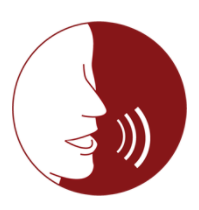11 Common Work Verbs
On this page, you will review common verbs we use to describe experiences. You will learn how to say their past tense form. You will do the following:
- Review the simple past tense.
- Review the pronunciation of -ed endings.
- Practise saying the past tenses of common work verbs.
A. The Simple Past Tense
We use the simple past tense to talk about the following:
| We use it to talk about something that happened at a specific time in the past. That is, something that happened and is finished. So here’s an example: | Last year, I worked for Amazon. I helped out in their warehouse. I was laid off after Christmas. (These things happened at a specific time—last year, or after Christmas. They happened and they’re done, they’re finished.) |
| We use the simple past tense to talk about the duration of an event that started and stopped in the past. Here’s an example: | For the first two months, I sorted packages. I drove a delivery vehicle for three months. I delivered packages during the Christmas rush. (These examples tell how long you did something—for three months, or the first two months, or during the Christmas rush.) |
| We also use the simple past tense to talk about habits, or facts, or “truths” that were true in the past but are no longer true in the present. For example: | I delivered packages for Amazon. (I don’t still do that.) |
So some past tense verbs are regular. Regular verbs use the -ed ending in the past tense. Other past tense verbs are irregular. These verbs do not use the -ed ending in the past tense. And some of the most common verbs in English are irregular.
Which of the following are irregular verbs?
B. Pronunciation of the -ed Ending
Listen to and read the following explanation of how to say the -ed ending. Try to shadow read the example verbs along with the speaker.
The -ed ending can be pronounced 3 ways, and there are rules for using each pronunciation.
| [id] | Use this when the verb ends with d or t | needed, patted, sorted, started, landed, operated |
| [t] | Use this when the verb ends with a voiceless sound: p, k, s, sh, ch | typed, pumped walked, worked, packed, picked, passed, fixed, finished, washed, watched |
| [d] | Use this when the verb ends in all other sounds (voiced consonants and vowels) | moved, filled, repaired, stayed, called, delivered, cleaned, applied |
C. Practice with -ed Endings
Below you can see four lists of work verbs. The present and the past form is listed for each verb. These words are all very common. You probably know all of these words. But do you know how to pronounce the past form, or the -ed form, of each verb?
There is Start Activity button below each word list.
- When you click on the button, you will see a present tense verb.
- Click Push to Speak, and say the past tense verb. Continue until you have completed the word list.
Hint: Don’t get frustrated! The word recognition software is great, but it’s not perfect. If you try to say a word a few times and it doesn’t recognize the word, don’t worry. Just check with your teacher or a fluent speaker of English. Ask if they can recognize the word when you say it!
      |
Speak aloud with an audio, trying to use the exact same words, timing, stress, and intonation as the speaker
Consonants are letters and sounds that are not vowels; consonant sounds stop or partly stop the flow of air (for example, p, b, d, t, s, sh, z, m, n, and more)
In English, vowels are represented by a, e, i, o, u, and sometimes y
Say
Feeling upset and impatient because you cannot do what you are trying to do
With no mistakes or weaknesses
Know what something is; identify something

